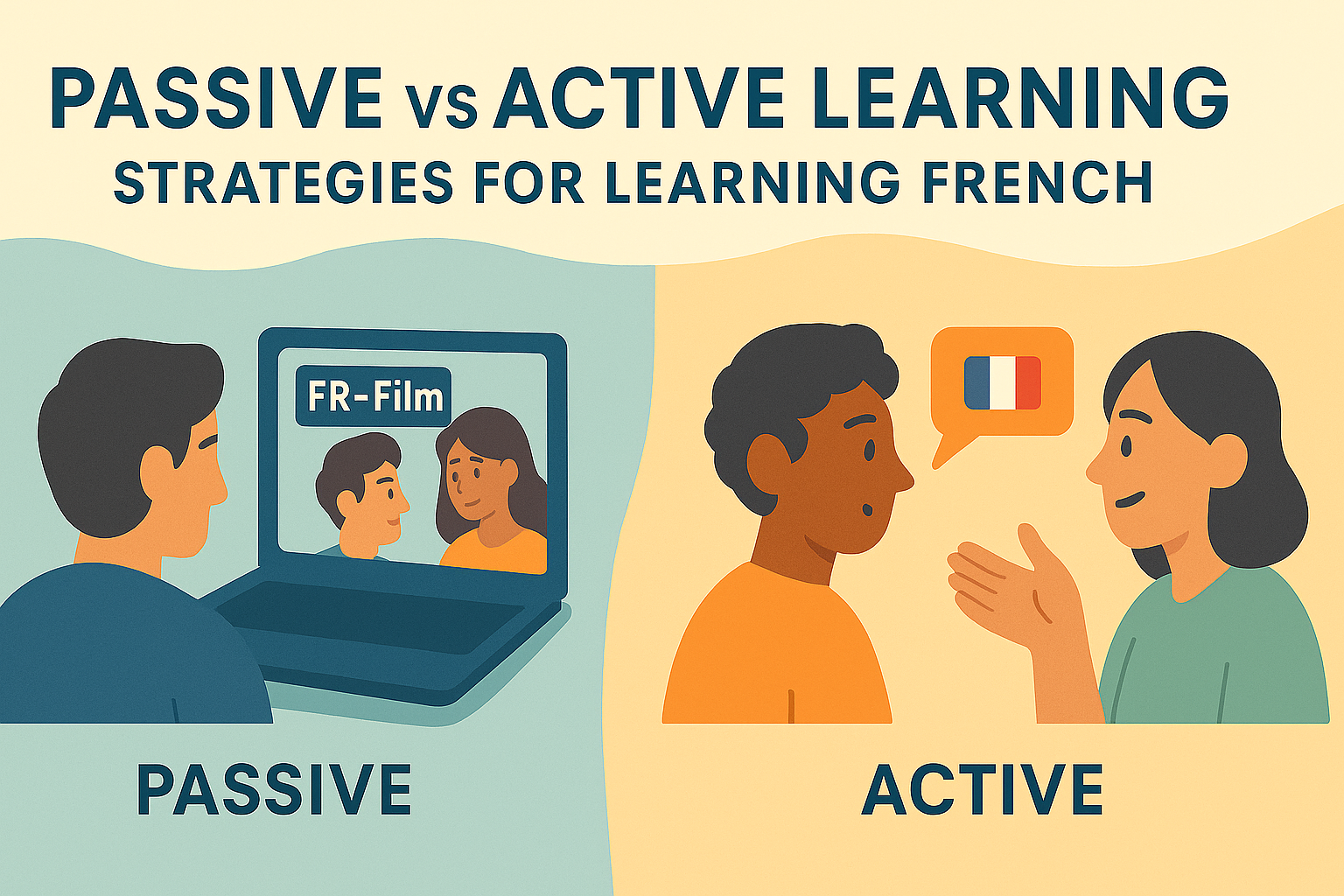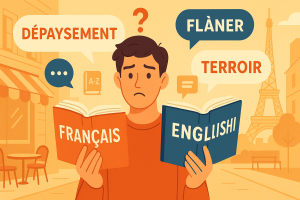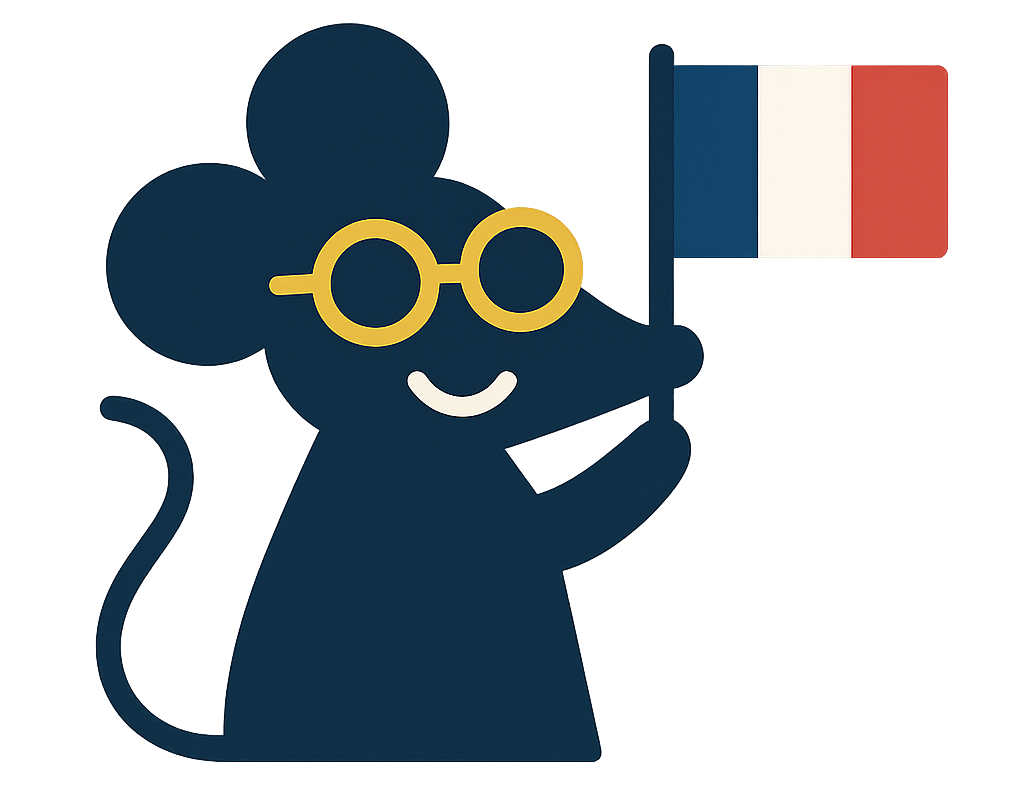How long does it really take to learn French? — realistic timeline for English speakers (A1–B2)
Learning French takes different amounts of time depending on your goals, study intensity, and natural advantages as an English speaker. This realistic guide breaks down CEFR levels, hour estimates from A1 to B2, factors that speed up or slow progress, and proven strategies to reach fluency faster.

The honest answer: it depends on your goal
The question “how long does it take to learn French?” lacks a single answer because “learning French” means different things to different people. Do you want to order coffee confidently in Paris? Navigate a business meeting? Read Proust in the original? Each goal requires vastly different time investments and represents distinct CEFR proficiency levels.
English speakers enjoy significant advantages when learning French. Approximately thirty percent of English vocabulary derives from French through Norman conquest and centuries of cultural exchange. Words like “restaurant,” “déjà vu,” and “entrepreneur” require zero memorization. This shared vocabulary foundation accelerates early progress compared to languages with no Romance influence.
However, French grammar introduces challenges unfamiliar to English speakers—gendered nouns, complex verb conjugations, subjunctive mood, and liaison pronunciation patterns. These elements demand dedicated study time that vocabulary recognition alone cannot shortcut. Realistic expectations prevent discouragement while maintaining motivation through measurable progress milestones.
CEFR levels explained — what each stage means practically
A1 — Absolute Beginner (60-80 hours)
Timeline: 2-3 months with 30 minutes daily study
What you can do: Introduce yourself, ask basic questions, order food, understand simple signs, exchange greetings, handle basic shopping transactions.
Example phrases you’ll master:
🇫🇷 FR — Je m’appelle Sarah. /ʒə mapɛl saʁa/
🇺🇸 EN — My name is Sarah.
🇫🇷 FR — Combien ça coûte ? /kɔ̃bjɛ̃ sa kut/
🇺🇸 EN — How much does it cost?
A2 — Elementary (180-200 hours total)
Timeline: 6-8 months with consistent practice
What you can do: Describe your background, discuss routines, express opinions simply, handle travel situations, understand simple conversations about familiar topics.
Example phrases you’ll master:
🇫🇷 FR — Je travaille dans le marketing depuis trois ans. /ʒə tʁavaj dɑ̃ lə maʁkətiŋ dəpɥi tʁwa ɑ̃/
🇺🇸 EN — I’ve worked in marketing for three years.
🇫🇷 FR — Pourriez-vous me recommander un bon restaurant ? /puʁje vu mə ʁəkɔmɑ̃de œ̃ bɔ̃ ʁɛstɔʁɑ̃/
🇺🇸 EN — Could you recommend a good restaurant?
B1 — Intermediate (350-400 hours total)
Timeline: 12-18 months with regular study
What you can do: Participate in workplace discussions, understand main points of clear standard speech, produce simple connected text on familiar topics, handle most travel situations independently, watch French shows with subtitles.
B2 — Upper Intermediate / Fluent (600-750 hours total)
Timeline: 2-3 years with consistent immersion
What you can do: Interact with native speakers without strain, understand complex texts, express yourself fluently and spontaneously, use French professionally, watch French media without subtitles, read contemporary literature.
Study hour calculations — breaking down the numbers
The Foreign Service Institute (FSI) classifies French as a Category I language for English speakers, estimating 600-750 classroom hours to reach professional working proficiency (roughly B2/C1). However, this figure requires context and adjustment based on several factors.
FSI estimates assume:
- Intensive classroom instruction with professional teachers
- Regular homework assignments (3-4 hours daily outside class)
- Motivated adult learners with strong study skills
- Focus on reading, writing, speaking, and listening equally
Self-study typically requires more hours than classroom learning because you lack immediate error correction, structured progression, and accountability. Multiply FSI estimates by 1.5-2x for realistic self-study timelines. Therefore, reaching B2 through self-study might require 900-1500 hours rather than 600-750.
Daily study time conversions:
| Daily Study Time | Hours to A2 (200h) | Hours to B1 (400h) | Hours to B2 (750h) |
|---|---|---|---|
| 15 minutes/day | 16 months | 32 months | 60 months |
| 30 minutes/day | 8 months | 16 months | 30 months |
| 1 hour/day | 4 months | 8 months | 15 months |
| 2 hours/day | 2 months | 4 months | 7.5 months |
Factors that speed up your progress
1. Previous language learning experience
If you’ve already learned another language to intermediate level, you possess metacognitive skills that transfer: recognizing grammar patterns, memorization techniques, comfort with making mistakes, and understanding how languages work structurally. This experience can reduce learning time by twenty to thirty percent.
2. Active immersion opportunities
Living in a French-speaking environment dramatically accelerates progress by forcing daily practice across all contexts. However, passive residence without deliberate practice yields limited results. Active immersion means:
- Consuming French media daily (podcasts, Netflix shows, radio)
- Speaking French whenever possible, even if basic
- Reading French texts at your level + one step higher
- Thinking in French during daily activities
3. Focused pronunciation practice early
Mastering French pronunciation patterns early prevents fossilized errors and builds confidence for speaking practice. Dedicate fifteen minutes daily to shadowing native speakers, focusing on liaison, nasal vowels, and the French ‘R’ sound.
💡 Pronunciation tip: Record yourself reading simple dialogues, then compare to native recordings. Focus on rhythm and melody before perfecting individual sounds.
4. Strategic vocabulary building
Learn high-frequency words first. The most common 1,000 French words cover approximately eighty-five percent of daily conversation. Focus on verbs of movement, être/avoir conjugations, and practical nouns before literary vocabulary. Avoid false friends that cause embarrassing mistakes.
5. Consistent daily practice over marathon sessions
Thirty minutes daily outperforms three-hour weekend sessions for language retention. Distributed practice allows consolidation between sessions, preventing cognitive overload while maintaining neural pathway activation. Even fifteen-minute daily sessions produce measurable progress over months.
Factors that slow down your progress
1. Fear of making mistakes
Perfectionism paralyzes speaking practice. Native speakers make grammatical errors regularly without communication breakdown. Prioritize communicative competence over grammatical perfection, especially at A1-A2 levels. Mistakes provide essential feedback for correction and improvement.
2. Passive learning without production
Reading and listening build receptive skills but don’t automatically transfer to productive abilities. Balance input with output—write simple texts, practice café conversations, record voice messages. Speaking and writing require separate neural pathways that passive consumption doesn’t develop.
3. Skipping fundamentals
Jumping to advanced content before solidifying basics creates comprehension gaps that compound over time. Master present tense thoroughly before tackling subjunctive mood. Ensure A2 proficiency before attempting B1 materials. Solid foundations support faster advanced progress later.
4. Inconsistent study schedule
Sporadic practice requires constant review, creating a “two steps forward, one step back” pattern. Regular exposure maintains active vocabulary and prevents regression. Even during busy periods, maintain minimal daily contact rather than complete breaks.
Realistic milestones — what to expect when
Month 1-2: Foundation Building
Focus on pronunciation basics, present tense of common verbs (être, avoir, faire, aller), essential vocabulary (numbers, days, colors), and simple question formation. You’ll understand basic signs, greet people, and order simple items.
Month 3-6: Basic Communication
Expand verb conjugations (past tense), build practical vocabulary (shopping, transport, dining), improve listening comprehension for slow, clear speech. You’ll handle basic transactions and short conversations about familiar topics.
Month 6-12: Intermediate Breakthrough
Develop conversational fluency in familiar domains, understand main ideas in standard speech, read simple texts with occasional dictionary use, write short messages and emails. This period requires patience as progress feels slower despite significant skill development.
Year 1-2: Comfortable Competence
Participate in extended conversations, comprehend most everyday speech, express nuanced opinions, read contemporary fiction with manageable difficulty, watch French media with decreasing subtitle dependence. Professional contexts become accessible with specialized vocabulary study.
Accelerated learning strategies
1. Create a personalized study system
Effective learning requires structure adapted to your schedule, goals, and preferences. Combine multiple methods: structured lessons for grammar, media consumption for listening, conversation exchange for speaking, and reading practice for vocabulary expansion.
2. Use spaced repetition for vocabulary
Review new words at increasing intervals (1 day, 3 days, 1 week, 2 weeks, 1 month) to transfer vocabulary from short-term to long-term memory efficiently. Digital flashcard systems automate this scheduling, optimizing review timing based on your performance.
3. Establish language learning triggers
Attach French practice to existing daily habits. Coffee time = French podcast. Commute = vocabulary review. Evening routine = ten minutes reading French news. These triggers create automatic practice without relying on motivation alone.
4. Set milestone-based goals rather than time-based goals
Instead of “study one year,” aim for “pass DELF A2 exam” or “navigate Montmartre independently.” Tangible milestones provide clear success metrics and maintain motivation through measurable progress toward specific capabilities.
Common timeline questions answered
Can I learn French in 3 months?
Reaching functional A2 level in three months requires approximately two hours daily study—achievable but demanding. Most learners underestimate consistency requirements. Realistic three-month goals include solid A1 proficiency with emerging A2 skills in familiar contexts.
Is one year enough to become fluent?
One year of intensive study (2+ hours daily with immersion) can reach B1/B2, which feels “fluent” for daily life but differs from native-like fluency. Professional fluency typically requires 2-3 years consistent study. Define “fluent” specifically for realistic assessment.
What if I can only study 15 minutes daily?
Limited time requires extended timelines but absolutely produces results. Fifteen minutes daily reaches A1 in 4-5 months, A2 in 10-12 months. Consistency matters more than duration. Supplement with passive exposure (French music during workouts, audiobooks during commutes) to accelerate progress.
Your personalized timeline starts now
Learning French requires patience, consistency, and realistic expectations. English speakers possess built-in advantages through shared vocabulary but must invest time mastering pronunciation, grammar, and active production skills. Progress follows non-linear patterns—rapid initial gains, plateau periods, sudden breakthroughs.
The most important timeline factor remains entirely within your control: starting today rather than tomorrow. Thirty minutes daily beginning now surpasses perfect study plans perpetually postponed. Your French journey begins with single phrases, builds through consistent practice, and culminates in confident communication.
🇫🇷 FR — Le voyage de mille lieues commence par un pas. /lə vwajaʒ də mil ljø kɔmɑ̃s paʁ œ̃ pa/
🇺🇸 EN — A journey of a thousand miles begins with a single step.
Study glossary — timeline vocabulary
| FR | IPA | EN |
|---|---|---|
| Apprendre | /apʁɑ̃dʁ/ | To learn |
| Niveau | /nivo/ | Level |
| Débutant | /debytɑ̃/ | Beginner |
| Intermédiaire | /ɛ̃tɛʁmedjɛʁ/ | Intermediate |
| Courant | /kuʁɑ̃/ | Fluent |
| Étudier | /etydje/ | To study |
| Pratiquer | /pʁatike/ | To practice |
| Progrès | /pʁɔɡʁɛ/ | Progress |
| Objectif | /ɔbʒɛktif/ | Goal |
| Immersion | /imɛʁsjɔ̃/ | Immersion |
| Vocabulaire | /vɔkabyлɛʁ/ | Vocabulary |
| Grammaire | /ɡʁamɛʁ/ | Grammar |
Authoritative references
- Foreign Service Institute — official language difficulty classifications and hour estimates.
- Council of Europe CEFR — Common European Framework of Reference for Languages.
Learn French with Roger, Native French Tutor
Expert instruction with proven teaching methods. Personalized lessons tailored to your goals from A0 to C1.
Weekly Lessons with Roger
Learn with Roger, a native French tutor. Structured curriculum from beginner to advanced.
- Native French speaker from France
- All levels (A0-C1) supported
- Personalized curriculum
- Proven teaching methodology
Trial Lesson with Roger
Experience Roger’s teaching method with a 25-minute trial session. Perfect to get started.
- 25 minutes with Roger
- Level assessment included
- Personalized learning roadmap
- No commitment required
A1 Foundations Guide
Complete beginner’s guide created by Roger. Structured lessons with native pronunciation.
- Step-by-step A1 curriculum
- Audio by native French speaker
- Practice exercises included
- Learn at your own pace
Continue Learning
Check out these related articles

15 French words that don’t translate to English — complete guide (A1–B1)
Discover 15 essential French words with no direct English translation, learn what they really mean, how to use them naturally,…

French cinema classics (A1–B1) — learn French through movies
Explore French cinema from the Lumière brothers to modern hits, and learn practical French with friendly A1–B1 lines, IPA, and…

French restaurant booking phrases (A0–A2) — reserve, arrive, order
french restaurant booking phrases help you secure a table, arrive smoothly, and start the meal with confidence. This A0–A2 guide…
👋 Join Our Community
Follow us for daily tips, pronunciation tricks, and free resources
👍 Follow on Facebook